It’s said that imitation is the sincerest form of flattery. In 1984, Wes Craven’s A Nightmare on Elm Street revolutionized the slasher movie. Because of this, the film spawned not only several sequels, but a number of rip-offs as well. There was the rock and roll film Dreamaniac. There were not one, but two Bollywood A Nightmare on Elm Street clones: Mahakaal (The Monster) and Khooni Murdaa (Deadly Corpse). Craven himself has been accused of cinematic cannibalism with his own My Soul to Take. Even the sequels had imitators; Inception and The Matrix can both be viewed as derivative of A Nightmare on Elm Street 3: Dream Warriors. Although not all good, some of these imitations were not half bad, either. An example of one of the good clones is 1988’s Bad Dreams.
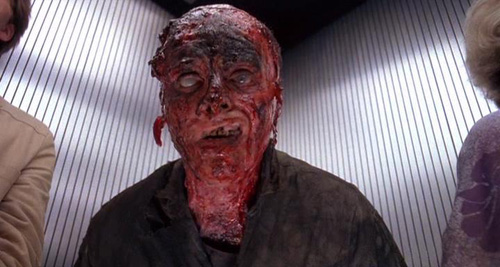
Bad Dreams begins in 1975 with a cult called Unity Fields, led by a maniac named Harris (Richard Lynch from The Sword and the Sorcerer), as they take part in a Jonestown-type mass suicide. Harris pours gasoline on all of his followers and lights them on fire, but one girl is blown clear of the blaze and survives. Thirteen years later, Cynthia (Permanent Record’s Jennifer Rubin) awakes from a coma to find herself in a psychiatric ward, remembering nothing of the cult. She attends group sessions with a handful of other patients led by Dr. Karmen (Bruce Abbott from Re-Animator) and is given experimental drugs by Dr. Berrisford (My Soul to Take’s Harris Yulin) in an attempt to jog her memory, but soon the other members of her therapy group start committing suicide – and Cynthia sees Harris lurking around the victim just before each incident. Cynthia has to determine if Harris is real or not and, if he is, find out who she can trust amongst the patients and doctors at the hospital to help her stop him before he kills again.
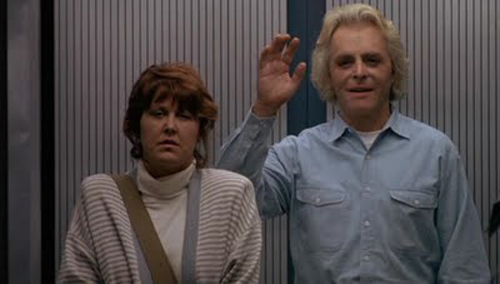
Bad Dreams usually gets lumped into the pile of late-eighties slashers, and with good reason; that’s what it is. It has the high body count, blood-and-latex effects, and a twist ending, all ingredients that were present in just about every horror movie from the time period. However, Bad Dreams has a supernatural element that many of the slice-and-dice films of the time were lacking. It was directed by Andrew Fleming (The Craft) and written by Fleming and Steven E. de Souza (Die Hard), and while it is not wholly original, Bad Dreams is still a blood-soaked, dread-filled good time.
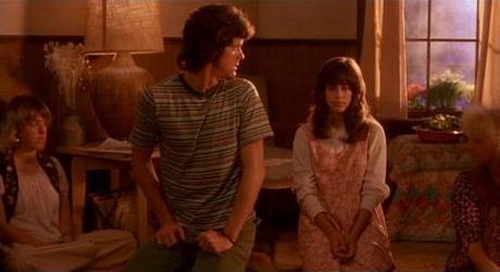
The influence that the A Nightmare on Elm Street franchise had on Bad Dreams is unmistakable. The most obvious element that was co-opted was the antagonist himself; like Freddy Krueger, Harris is a badly burned, highly charismatic individual who seduces and attacks his victims in a dream world. The blurred line between reality and fantasy is another factor that is borrowed from the Elm Street franchise. Even the look of the film, with bright colors combined with concealing shadows and dark silhouettes, seems derivative. To top it all off, final girl Jennifer Rubin played the “beautiful and bad” warrior the year before in A Nightmare on Elm Street 3: Dream Warriors. With all these similarities, it’s hard to believe that Bad Dreams wasn’t trying to imitate the A Nightmare on Elm Street movies.
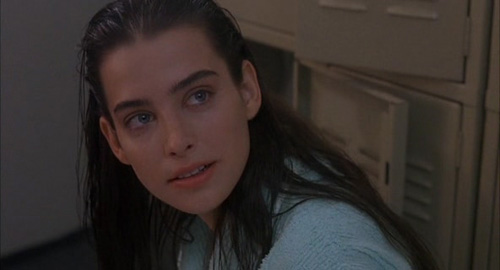
There are some truly awesome practical gore effects in Bad Dreams, courtesy of Michelle Burke (Terror Train, Visiting Hours), Roger George (The Dunwich Horror, Invisible Invaders) and Lise Romanoff (Night of the Demons, Night of the Creeps). Each apparent suicide is its own creative splatter scene, and the deaths range from a woman jumping from the roof of a building crashing on the pavement below to a couple slipping into an air conditioning turbine raining blood throughout the vents. In one memorable scene, one of Cynthia’s fellow patients presses his hand down on a knife, the blade going all the way through his palm. In another, a car repeatedly rams into a man, squashing him against a wall behind him. There is no shortage of carnage in Bad Dreams, and the effects team comes through with flying buckets of blood.
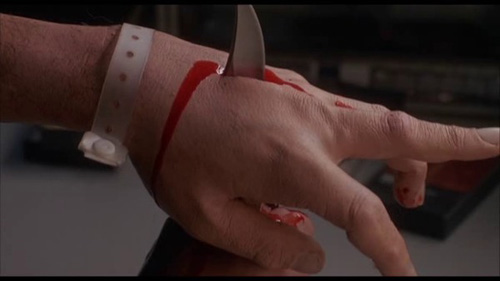
The blood and guts are not the only things that make Bad Dreams freaky, however. There are several scenes that are creepy as all hell. Harris himself is a great villain, with his appearances seemingly limited to Cynthia’s eyes only and quickly shifting from normal cult leader to extra-crispy burn victim. Cynthia’s first sighting of Harris is in a crowded elevator with the lights flickering so that the confined space is peppered with a strobe-like effect, and she (along with the audience) isn’t sure whether he’s real or not. The cult suicide scene, which is revisited via flashback several times throughout the film, is disturbing as well, with every instance adding more details, such as the presence of children and babies in the flaming farmhouse. As campy and slasher-y as Bad Dreams is, there are moments of pure terror that make it completely worth the ride.
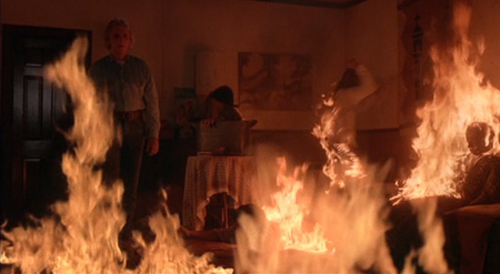
As was the trend with late eighties horror films, Bad Dreams boasts a soundtrack full of rock music that was utilized to create music video-style montages within the film. The film’s general plot is foreshadowed by the inclusion of The Electric Prunes’ “I Had Too Much to Dream (Last Night)” in an early scene. Another scene features a version of Frank Sinatra’s “My Way” that, although credited to Mamby Pamby and the Smooth Putters, sounds suspiciously like The Sex Pistols’ Sid Vicious’ version of the standard. The closing credits leave the audience with a bang by being set to Guns N’ Roses’ smash hit “Sweet Child O’ Mine.” As far as soundtracks go, Bad Dreams is no Trick or Treat, but rock fans could do a lot worse.
In the world of horror, truly original movies are hard to find. If a film is going to be a rip-off, it may as well be a rip-off of something good. For those who always wished that there was one more A Nightmare on Elm Street sequel, Bad Dreams may be just the ticket.
